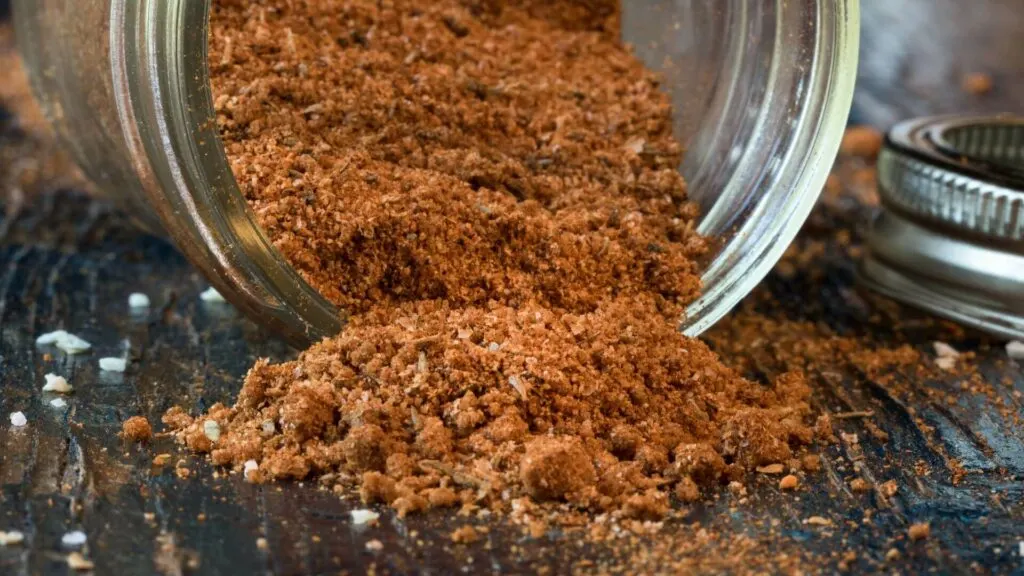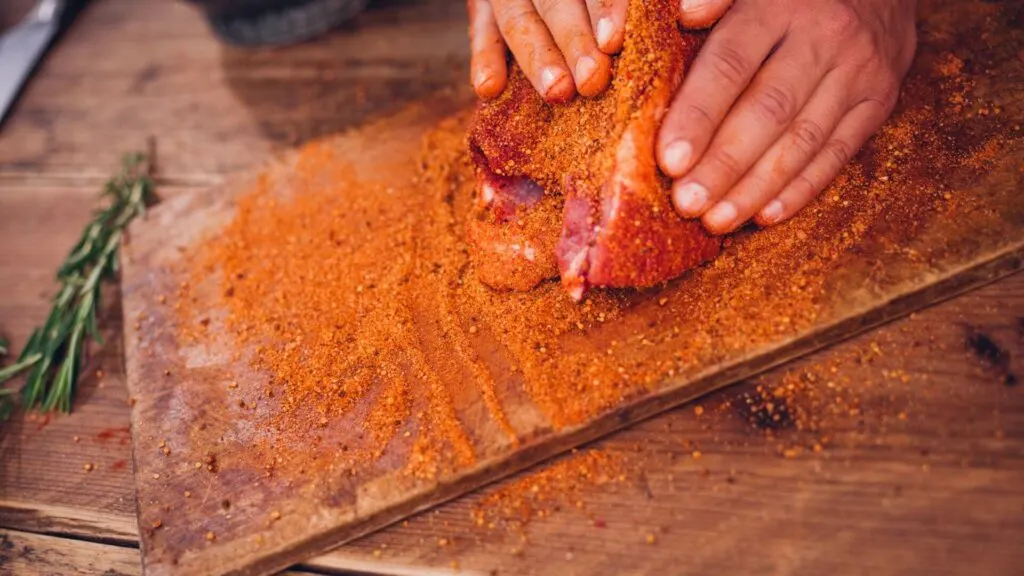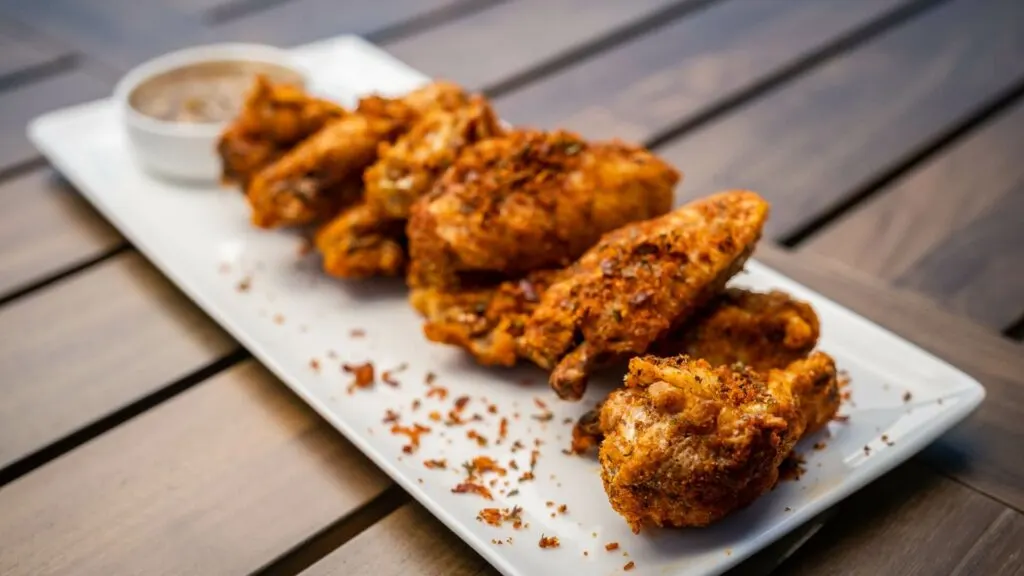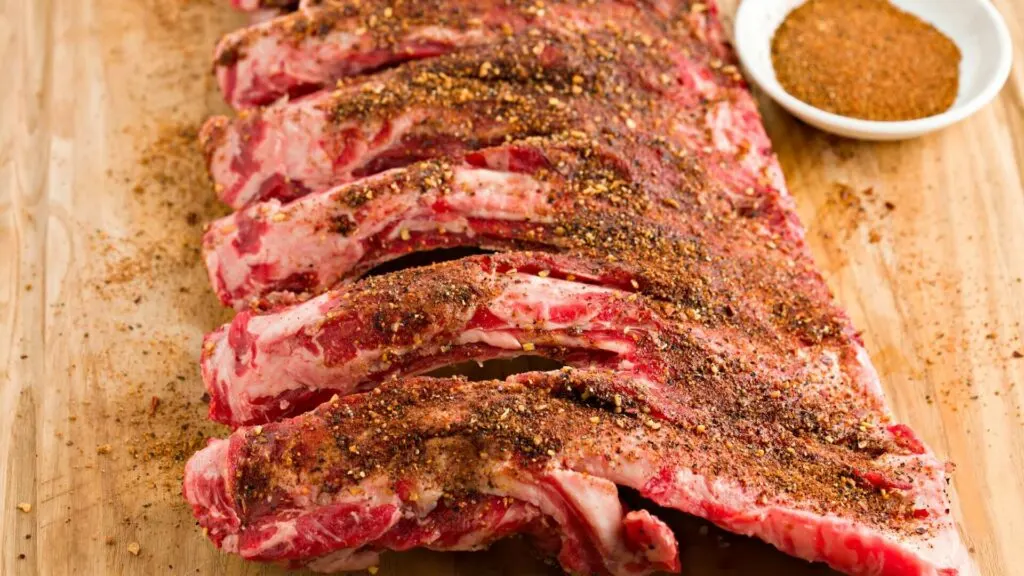When it comes to enhancing the flavors of meats and vegetables, a well-crafted rub seasoning can make all the difference. Whether you’re grilling, roasting, or even slow-cooking, rub seasoning can elevate your dish to new culinary heights. Let’s delve into the art of selecting and applying the perfect rub seasoning that will have your taste buds dancing with delight.

1. Understanding Different Types Of Rub Seasonings
Before diving into selecting the perfect rub seasoning for your dish, it’s important to understand the various types available. Rub seasonings can be broadly classified into three categories: dry rubs, wet rubs, and paste rubs. Each type offers a unique blend of flavors and textures, with options ranging from the smoky sweetness of a raspberry chipotle rub to the bold intensity of a classic barbecue blend.
Dry Rubs
Dry rubs are a mixture of dry herbs, spices, and salt that adhere to the surface of food when applied before cooking. They provide excellent flavor while also creating a delightful crust on grilled or roasted dishes.
Wet Rubs
As the name suggests, wet rubs consist of wet ingredients such as vinegar, oil, honey, or mustard, in addition to herbs and spices. These rubs not only infuse flavor but also help moisturize and tenderize meats during cooking.
Paste Rubs
Paste rubs are made by combining ground herbs and spices with liquid ingredients like oil or water to create a thick paste. This type of rub clings well to meat or vegetables and imparts rich flavors throughout the cooking process.

2. Choosing The Right Rub For Your Dish
Now that we have established an understanding of different types of rub seasonings let’s move on to selecting the right one for your dish.
Consider Flavor Profiles
Match your choice of seasonings with the flavors you desire in your final dish. For example, if you want a bold, smoky flavor in barbecued ribs, opt for a combination of paprika, cayenne pepper, brown sugar, and garlic powder. Or, for a unique twist, try a raspberry chipotle rub to add a sweet and spicy kick.
Complementing The Protein
Different meats have unique flavor profiles that can be enhanced with specific seasonings. For instance, when cooking poultry, sage, and thyme rubs work wonders in complementing the natural taste, while for red meat like steak, a robust blend of black pepper and rosemary can create a tantalizing combination.
Mindful Pairings for Vegetables
Just as with meats, selecting the right seasoning rub can bring out the best in your vegetables, too. Delicate vegetables like zucchini or asparagus do well with light herb-driven rubs such as dill or lemon pepper, while heartier ones like cauliflower or eggplant benefit from earthy seasonings like cumin or smoked paprika.

3. Techniques For Applying Rub Seasoning
Once you have chosen the perfect rub seasoning for your dish, it’s time to apply it thoughtfully to achieve maximum flavor impact.
Dry Meat Before Rubbing
Ensure that your meat is dry before applying any seasoning. Moisture on the surface can prevent the rub from adhering properly to the meat.
Massage Gently But Thoroughly
Massage the rub onto your meat using gentle yet firm pressure to help it penetrate and adhere evenly. Be sure to cover every nook and cranny for consistent flavor throughout.
Allow Time To Marinate
Depending on your desired intensity of flavors, let the seasoned meat marinate anywhere from 30 minutes to overnight in the refrigerator before cooking.
4. Additional Tips For Enhancing Flavor
Combine Fresh Herbs and Rub Seasonings
Add an extra layer of flavor by combining fresh herbs with your rub seasoning mix. Finely chop rosemary or basil leaves and mix them along with dried spices for a vibrant burst of taste.
Use Citrus-Based Marinade For Acidic Balance
For a well-balanced flavor profile, consider marinating your meat or vegetables with a citrus-based marinade before applying the rub. The acidity will help tenderize the protein while imparting bright and refreshing notes.
Experiment with Ratios
Don’t be afraid to tweak and experiment with the amounts of different spices and flavorings in your rub seasoning. Start with a base recipe, but adjust it to suit your taste preferences.

Conclusion
With the knowledge of different rub seasoning types, tips for selecting, and techniques for applying, you are now equipped to take your cooking to new heights. Experiment with combinations, trust your taste buds and don’t be afraid to get creative. Elevate your favorite dishes from regular to remarkable simply by selecting and applying the perfect rub seasoning.

Jessi is the creative mind behind The Coffee Mom, a popular blog that combines parenting advice, travel tips, and a love for all things Disney. As a trusted Disney influencer and passionate storyteller, Jessi’s authentic insights and relatable content resonate with readers worldwide.
